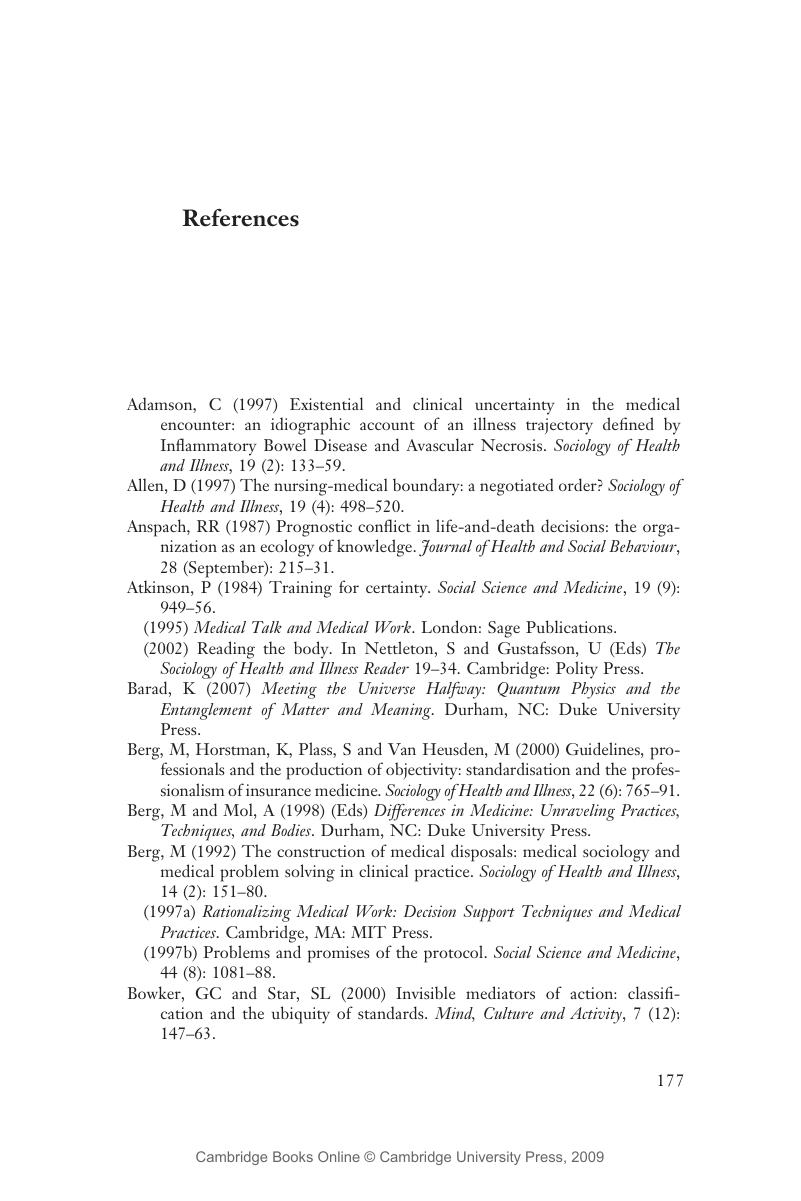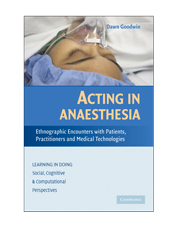Book contents
- Frontmatter
- Contents
- Series Foreword
- Acknowledgements
- Acting in Anaesthesia: Ethnographic Encounters with Patients, Practitioners and Medical Technologies
- 1 Understanding Anaesthesia: Theory and Practice
- 2 Refashioning Bodies, Reshaping Agency
- 3 Accounting for Incoherent Bodies
- 4 Teamwork, Participation and Boundaries
- 5 Embodied Knowledge: Coordinating Spaces, Bodies and Tools
- 6 Recognising Agency, Legitimating Participation and Acting Accountably in Anaesthesia
- References
- Index
- Titles in the series
- References
References
Published online by Cambridge University Press: 20 August 2009
- Frontmatter
- Contents
- Series Foreword
- Acknowledgements
- Acting in Anaesthesia: Ethnographic Encounters with Patients, Practitioners and Medical Technologies
- 1 Understanding Anaesthesia: Theory and Practice
- 2 Refashioning Bodies, Reshaping Agency
- 3 Accounting for Incoherent Bodies
- 4 Teamwork, Participation and Boundaries
- 5 Embodied Knowledge: Coordinating Spaces, Bodies and Tools
- 6 Recognising Agency, Legitimating Participation and Acting Accountably in Anaesthesia
- References
- Index
- Titles in the series
- References
Summary

- Type
- Chapter
- Information
- Acting in AnaesthesiaEthnographic Encounters with Patients, Practitioners and Medical Technologies, pp. 177 - 184Publisher: Cambridge University PressPrint publication year: 2009



